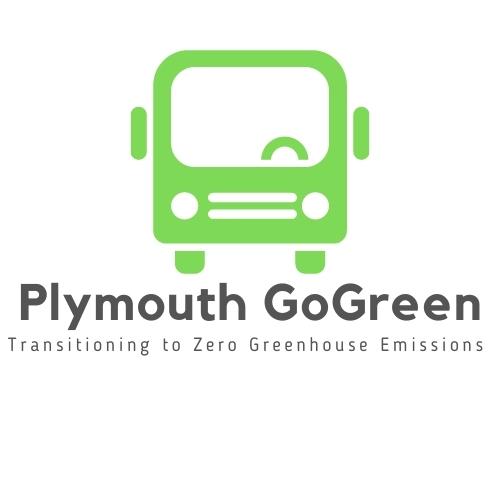Who are we?
Plymouth GoGreen is a movement to promoting the transition to a zero greenhouse emitting public transport network.
There are currently many different plans that the city council has for the future but these need to happen now. This is because the climate crisis is happening sooner than expected and the faster we adapt and start to transition the faster the impact on the climate will be mitigated.
This movement is not just theory, it has been seen in multiple cities around the world how to remove traffic and promote a greener city. Amsterdam is the prime example of this with the majority of the public using either public transport, cycling or walking to travel around the city.
Amsterdam boasts an impressive record, this is because 70% of the transport within the capital is through walking or cycling (I amsterdam, 2022), this means that there is a small reliance on public transport.
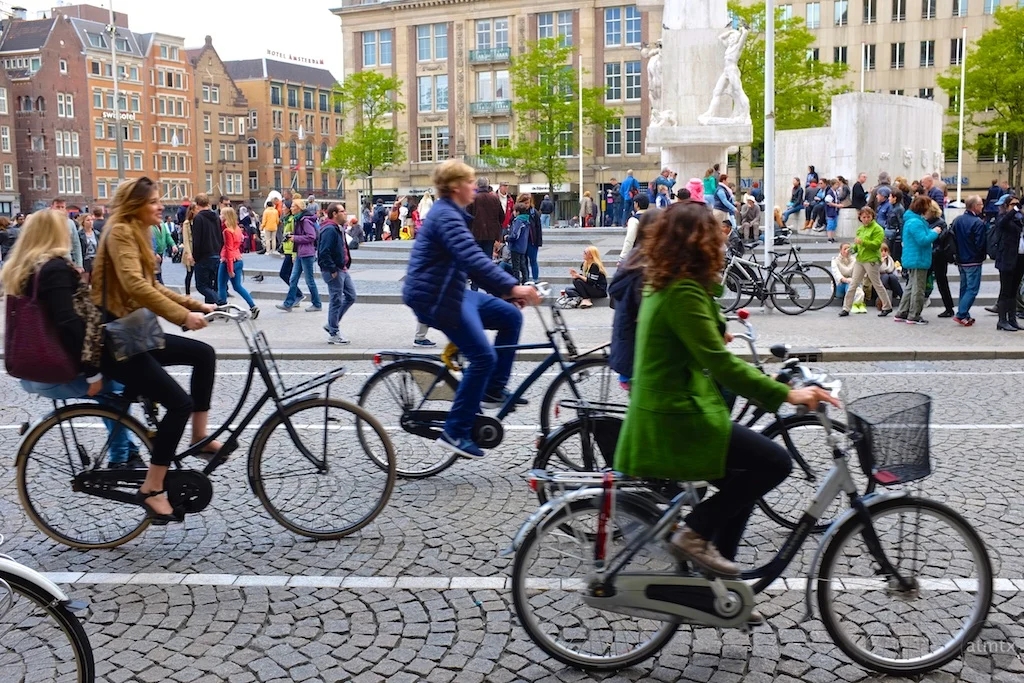
Goal 13 of the United Nations sustainable development goals is climate action. It promoted the transitioning to a decarbonized society in the coming future, this is to benefit everyone in modern society as it is designed to limit global warming and to stabilize the global environment (United Nations , 2022).
This is relevant to Plymouth as every city has to change how they operate in order to reduce the effect on the climate. This change has to be organized and include the local government, private companies as well as the public. In this case Plymouth City council have many different environmentally considerate policies in place and are transitioning to more policies in the future (Plymouth City Council , 2022).
Transitioning to Alternative Fuels.
Within Plymouth there is a limited amount of green public transport, Plymouth City bus is the major provider of public transport in the form of buses but their fleet is mainly use combustion engines. This means that all of these forms of transport are polluting the environment in the form of carbon dioxide and also harming society through noise pollution (Ministry of Transport, Public Works and Water Management, 2022).
However there has been developments in new alternative fuels which could change the buses. An example of this is the public transport in Amsterdam as they use electric buses and trams. The generation of electricity is contacted to Nuon/Vattenfall who supply 100% wind generated power to the capital (Vosman, 2018). This limited the climate impact as they are being powered from renewable sources and furthermore are much quieter than combustion powered vehicles.
With the majority of power generation coming from renewable sources, using this in public transport reduces the environmental cost. This promotes sustainability within the capital which is crucial to the Netherlands. Due to the topography of the country much of the land is at sea level, this means that the impact of global warming and sea level rise will impact their country harshly. By limiting the countries greenhouse emissions its will help reduce the climate impact but further sets an example of what can be done to higher emitting countries in the hope to influence them to change their ways.

This mentality of being environmentally considerate to reduce the amount of greenhouse emissions can be applied anywhere such as Plymouth.
As Plymouth is a coastal city the impact of climate change will be felt immediately, this is because of rising sea levels and coastal flooding when large storms arrive. It can be seen that there has been an impact already with the predicted frequency of strong storms increasing globally, this can be seen in figure 3.
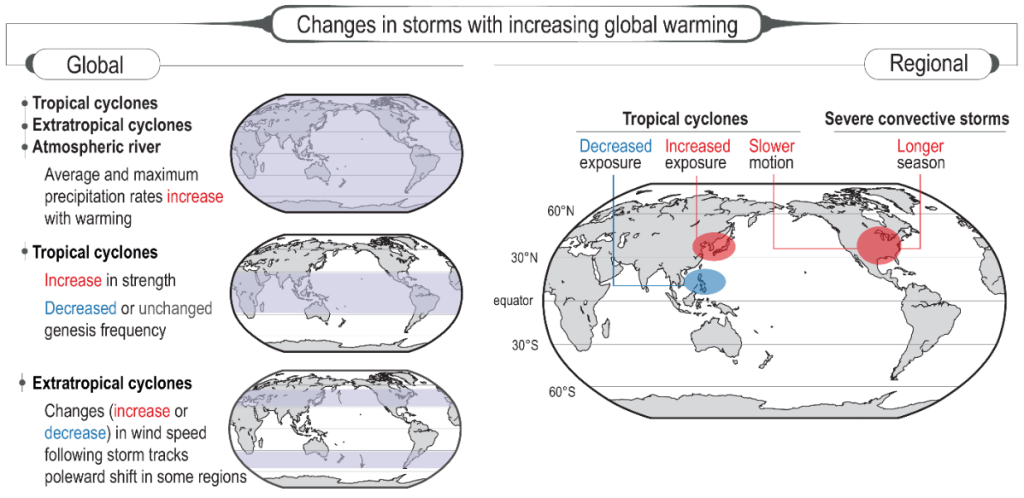
Therefore the social change to limit climate change needs to happen. Moving public transport in the city of Plymouth to be green, using alternative fuel sources is a good example of how it can be achieved. Following the examples of Amsterdam there can be may different changes to how the public enter the city as well as move around the city centre, this can be done by promoting a reduction in the use of private vehicles as well as increasing the availability of public transport.
Currently Plymouth has 2 main public transport methods, the local Plymouth City Bus service within the city and the main train line which can go to most other major cities around the country. The difficulty is with the availability of these services, currently most bus routes operate once every hour and every half an hour on very popular routes (Plymouth City Bus, 2022), this means that the majority of the public use private vehicles due to the convenience. Excess vehicles being used within the city which the majority of which pollute the environment as they are normal combustion engines. If there was an increase in the frequency of bus routes then they connivence of these would increase which help attract more people to use this service.
Furthermore creating a new fleet of electric busses is possible but will have a large cost on the route operator. However if the local government who supply’s contracts to private companies to operate services required a certain amount of the current fleet to be carbon free then alternative fueled buses will be used.

The effects of this policy is that there will be a reduction in the use of combustion engines which add to the greenhouse gas effect.
There are many different variations of electric buses, Volvo being the largest bus manufacture has now created electric buses which do not require overhead power cables. This means that there less cost for these new buses due to no extra infrastructure needed apart from charging stations, which can be integrated within bus stations which can offer regular charging for the bus at each stop, shown in figure 5 below.
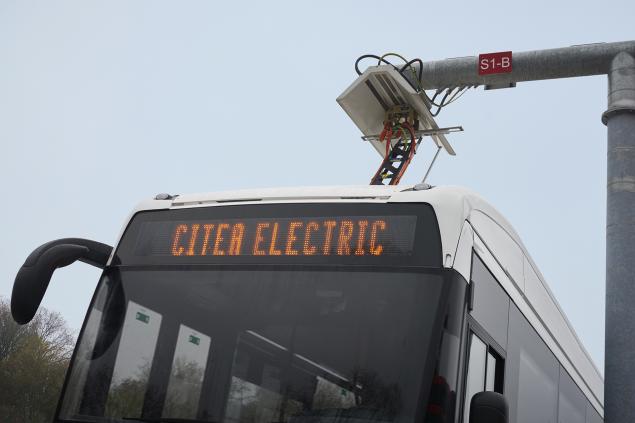
The benefits of using electric alternatives is that there is a reduced amount in the running costs of the vehicles, this is due cost of charging the vehicle being less when compared to using fossil fuels. Furthermore, the cost of maintaining the vehicle is less as an electric powered bus has less moving parts within the engine which means that there is less wear on each components (Maloney, 2019). The lower the running costs the short the payback time on busing the busses which means in the long term, transitioning to electric buses will be economically profitable.
However using just electric powered vehicles can still lead to an environmental cost as the electric to power those vehicles can still be generated from fossil fuels. To make them completely green all the power needs to come from renewables, this is not currently possible as the UK’s power supply has only a small percentage of renewables show in figure 6 below.
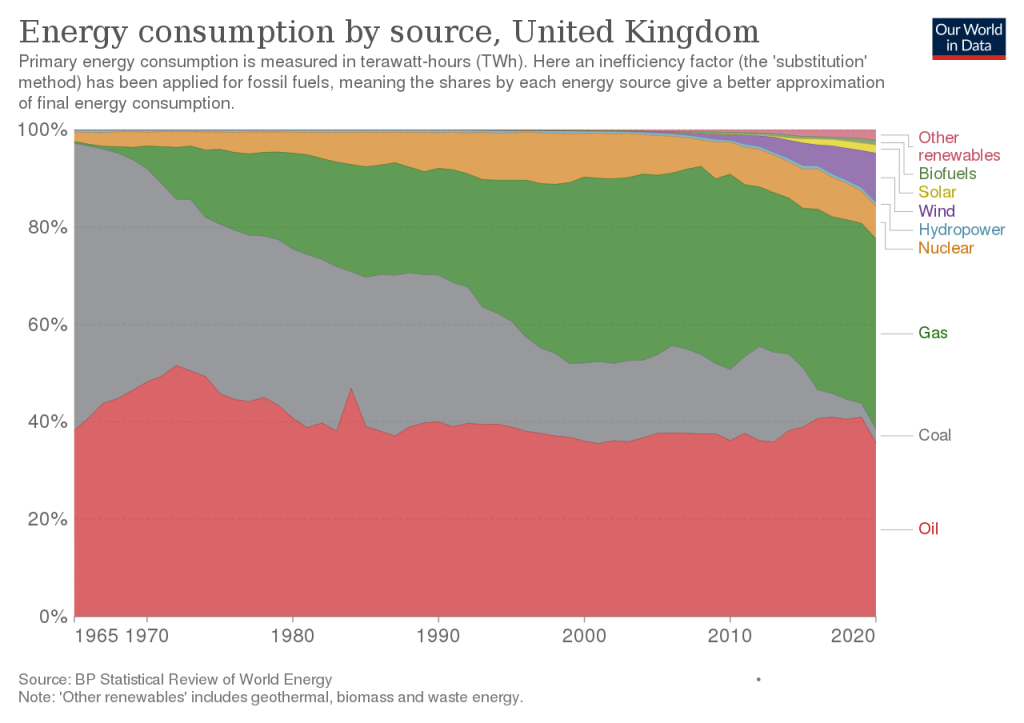
The long term transition to renewable energy will improve this however with the current technology this is not possible.
Overall, the use of public transport needs to be increased to limited the impact on the environment, this will be reducing the amount of traffic that goes into Plymouth which benefits society as a whole. Providing education to the public in an easy to understand way will provide backing for the new changes however for this to be possible the private sector needs to change operation. This can be done through regulating the suppliers which will create legal challenges or through the use of subsidies from the local government to help reduce the cost of transitioning to new alternative fuels.
The 15 Minute City
However, to reduce the climate impact of Plymouth as a whole there cannot only be one focus. Public transport is a positive start but changing the city for the long term and transitioning to a greener society will mean some big changes.
An example of this is the theory of the 15 minute city. The 15 minute city is the idea that everything you will need should be within a 15 minute walking or cycling radios of everyone’s homes. This includes living, working, supplying, caring, learning and enjoying (Yeung, 2021). This promotes the public to walk and cycle when they can, which reduces the amount of traffic which impacts the climate. As well as benefitting the climate a reduction in traffic also can lead to some social benefits. A reduction in traffic reduces noise pollution, there are many benefits to this as noise reduction benefits the health of society especially in older and very young populations (Iberdrola , 2022). This means that overtime the health of society can improve by removing traffic as well as the environmental benefits.
The 15 minute city also promotes predestining the city center, removing the possibility of vehicles within the city center and promoting walking and cycling. Many different city centers around the world have transitioned or are a pedestrian, this benefits society as it promotes exercise for the population as well as increasing the value of sidewalk stores as it makes accessing them easier for the public, this helps increase the land value within the cities shopping district.
However there are also major downsides to this 15 minute city as without proper planning it can make errands for the majority of the public harder. This is because if part of the major attractions and services are split up across a large area it can make the travel time between all of the different areas longer and further. This can make going into the town a longer journey and harder for some of the disabled population.
Overall, creating a largely pedestrian city is possible if all of the possible services that are required are properly located together which allows for easy access for all of the public. Different services may be clumped together in which the option for public transport between these areas can be offered as an alternative to private transport which will reduce the impact on the climate.
Alternative modes of transport.
Alternatively there should be a balance between reducing the amount of traffic while maintaining the convenience of moving around the city. One way to do this could be to introduce more modes of transport within the city which anyone can use. An example of this is e-scooters, this mode of has become very popular as it is a low cost alternative. There are many different examples of different private companies which currently supply the public with this transport but the main one within the UK is Voi. They currently supply electric scooters at low cost to several cities including Bristol as the city with the most units. This allows for the public to use these quick modes of personal transport throughout the city while reducing the environmental costs (Voi, 2022).
Within Plymouth, this could be introduced to offer another mode of personal transport as other than walking and using private cycles there is no alternative. Electric scooters are a low cost mode of transport which can be adapted to be used more widely within the city, it could reduce the amount of cars being used to travel short distances which will reduce the environmental impact within Plymouth.
However, this new mode of transport needs to be regulated. Many different surveys focus on the amount of accidents within city centers which occur, there is a major trend which shows with the increase in the amount of people there is an increase in motor to pedestrian and cycle accidents. There needs to be a change in how the roads within the city are adapted to allow for many different modes of transport to use them such as cycles and e-scooters. A recent study shows that multilane intersections including roundabouts have a significant increase in the amount of accidents with cycle and e-scooter users.
If this is to be widely adopted, major reforms of the city needs to be made to include many cycle lanes and routes which increase the safety of other road users. If this is adopted, then this could influence the public to use other modes of transport which can increase the environmental footprint of Plymouth and create a greener city.
This mode of transport can be widely implemented as there are many different private companies that supply these scooters. However, due to the the local government could regulate the market by selling the rights to operate within the city for a certain time period. This would mean that the city council would have some income from the new market of e-scooters as well of ensuing that this market is well regulated and have a high safety level.
Promoting Electric Private Vehicles
Finally, the promotion of electric powered vehicals will reduce the impact on the climate which combustion engines cars have. Plymouth City Council already have policies which set requirements for private and public car parks to include charging points however this can be expanded.
The introduction of regulation on what cars can enter certain parts of the city depending on the emissions of the cars will impact the public use of private vehicle greatly. If a policy was implemented which costs the public who don’t have alternative powered cars to enter the city, then there could be a reduction in the levels of traffic within the city. This policy could be paired with the use of park and ride buses which are powered by green buses.
This would greatly reduce the levels of pollution within the city which benefits not just the environment but also the social aspect of society. It will also provide an income to the council which could be used to invest in new green technologies when they become possible in the near future.
Conclusion
Overall if these policies are introduced the pollution of Plymouth will be reduced overtime. There are many different ways to decrease the environmental impact that the city does but increasing how the public travels around the city center will have the largest impact overall. This is only possible if there are reforms throughout all industries and it is widely accepted in the public and private sector. Implementing new green technologies will further benefit the city but this will have to have significant investment from private companies, which can only happen though the use of regulations from the local government.
Reference list
I amsterdam. (2022, May 12). Sustainable transportation: train travel to meetings in Amsterdam. Retrieved from I amsterdam: https://www.iamsterdam.com/en/business/meetings/sustainable-transportation#:~:text=The%20city’s%20ambitious%20plan%20is,to%20choose%20environmental%2Dfriendly%20transportation.
Iberdrola . (2022, May 16). Noise pollution: how to reduce the impact of an invisible threat? Retrieved from Iberdrola : https://www.iberdrola.com/sustainability/what-is-noise-pollution-causes-effects-solutions
Maloney, P. (2019, October 19 ). Electric buses for mass transit seen as cost effective. Retrieved from American Public Power Association: https://www.publicpower.org/periodical/article/electric-buses-mass-transit-seen-cost-effective#:~:text=Electric%20buses%20could%20provide%20fuel,parts%20than%20fossil%20fuel%20buses.
Ministry of Transport, Public Works and Water Management. (2022, May 12). Public transport in the Netherlands. Retrieved from https://www.emta.com/IMG/pdf/brochure.pdf
Plymouth City Bus. (2022, May 15). Timetables & Routes. Retrieved from Plymouth City Bus: https://www.plymouthbus.co.uk/services
Plymouth City Council . (2022, May 15). Environment and pollution. Retrieved from Plymouth City Council : https://www.plymouth.gov.uk/environmentandpollution
United Nations . (2022, May 15 ). Goal 13 UNSDGs. Retrieved from United Nations : https://sdgs.un.org/goals/goal13
Voi. (2022, May 17). How it works. Retrieved from Voi: https://www.voiscooters.com/how-to-voi/
Vosman, Q. (2018, October 18). Amsterdam urban rail switches to renewable energy. Retrieved from International railways journal: https://www.railjournal.com/passenger/light-rail/amsterdam-urban-rail-switches-to-renewable-energy/#:~:text=GVB%20and%20the%20municipality%20of,the%20capital’s%20public%20transport%20system.
Yeung, P. (2021, January 4). A new urban planning model will change the French capital – and could provide a template for how to create stronger local communities and make residents happier. Retrieved from BBC: https://www.bbc.com/worklife/article/20201214-how-15-minute-cities-will-change-the-way-we-socialise
Figure List
Figure 1 – Invest in Holland . (2018, April 20). How the Dutch Lead in Sustainability. Retrieved from Invest in Holland : https://investinholland.com/news/dutch-lead-sustainability/
Figure 2 – Wind Europe. (2022, May 12). WindEurope and the city of Amsterdam present: Wind energy in the Netherlands! Retrieved from Wind Europe: https://windeurope.org/about-wind/campaigns/amsterdam/
Figure 3 – Met Office. (2022, May 12). UK and Global extreme events – Wind storms. Retrieved from Met Office: https://www.metoffice.gov.uk/research/climate/understanding-climate/uk-and-global-extreme-events-wind-storms
Figure 4 – Budach, D. (2022, May 15). More electric buses for the Amsterdam region. Retrieved from Urban Transport Magazine : https://www.urban-transport-magazine.com/en/more-electric-buses-for-the-amsterdam-region/
Figure 5 – VDL Bus and Coach. (2022, May 15 ). DAILY OPERATION. Retrieved from VDL Bus and Coach: https://www.vdlbuscoach.com/en/public-transport/daily-operation
Figure 6 – BP Statistical Review of World Energy. (2022, May 15). Energy consumption by source, United Kingdom. Retrieved from Our World in Data : https://ourworldindata.org/grapher/energy-consumption-by-source-and-region?country=~GBR
